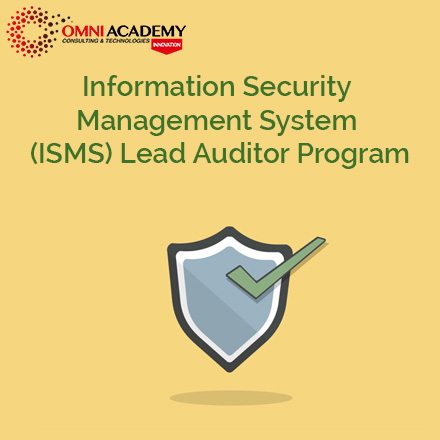Administering a SQL Database Infrastructure
Microsoft SQL Server continues to be one of the world’s most popular and top databases. Database is a heart of IT which is needed to stored all critical data and information. If you want to become SQL database administrator then this is the course for you. This training course will provide you all the necessary skills you need to be a successful database administrator.
Course Key Learnings:
By the end of this course you will
-
Administration of SQL database through Microsoft Windows
-
You will learn 150+ SQL queries
-
You will be able to troubleshoot everyday SQL related issues
-
You will manage SQL servers in a corporate environment
-
You will write basic to advance SQL queries
-
Troubleshoot everyday SQL database related issues
-
Know how to answer specific business questions by using SQL’s aggregate functions
-
Students will be able to run reports for management so they can make financial decisions.
Course Outline:
Protection of data within your Microsoft SQL Server databases is essential and requires a working knowledge of the issues and SQL Server security features. This module describes SQL Server security models, logins, users, partially contained databases, and cross-server authorization.
Lessons
- Authenticating Connections to SQL Server
- Authorizing Logins to Connect to databases
- Authorization Across Servers
- Partially Contained Databases
After completing this module, you will be able to:
- SQL Server basic concepts.
- SQL Server connection authentication.
- User login authorization to databases.
- Partially contained databases.
- Authorization across servers.
sing roles simplifies the management of user permissions. With roles, you can control authenticated users’ access to system resources based on each user’s job function—rather than assigning permissions user-by-user, you can grant permissions to a role, then make users members of roles. Microsoft SQL Server includes support for security roles defined at server level and at database level.
Lessons
- Working with server roles
- Working with Fixed Database Roles
- Assigning User-Defined Database Roles
After completing this module, you will be able to:
- Describe and use server roles to manage server-level security.
- Describe and use fixed database roles.
- Use custom database roles and application roles to manage database-level security
In the previous modules, you have seen how Microsoft SQL Server security is organized and how sets of permissions can be assigned at the server and database level by using fixed server roles, user-defined server roles, fixed database roles, and application roles. The final step in authorizing users to access SQL Server resources is the authorization of users and roles to access server and database objects. In this module, you will see how these object permissions are managed. In addition to access permissions on database objects, SQL Server provides the ability to determine which users are allowed to execute code, such as stored procedures and functions. In many cases, these permissions and the permissions on the database objects are best configured at the schema level rather than at the level of the individual object. Schema-based permission grants can simplify your security architecture. You will explore the granting of permissions at the schema level in the final lesson of this module.
Lessons
- Authorizing User Access to Objects
- Authorizing Users to Execute Code
- Configuring Permissions at the Schema Level
After completing this module, you will be able to:
- Authorize user access to objects.
- Authorize users to execute code.
- Configure permissions at the schema level.
Module 4: Protecting Data with Encryption and Auditing
When configuring security for your Microsoft SQL Server systems, you should ensure that you meet any of your organization’s compliance requirements for data protection. Organizations often need to adhere to industry-specific compliance policies, which mandate auditing of all data access. To address this requirement, SQL Server provides a range of options for implementing auditing. Another common compliance requirement is the encryption of data to protect against unauthorized access in the event that access to the database files is compromised. SQL Server supports this requirement by providing transparent data encryption (TDE). To reduce the risk of information leakage by users with administrative access to a database, columns containing sensitive data—such as credit card numbers or national identity numbers—can be encrypted using the Always Encrypted feature. This module describes the available options for auditing in SQL Server, how to use and manage the SQL Server Audit feature, and how to implement encryption.
Lessons
- Options for auditing data access in SQL Server
- Implementing SQL Server Audit
- Managing SQL Server Audit
- Protecting Data with Encryption
After completing this module, you will be able to:
- Describe the options for auditing data access.
- Implement SQL Server Audit.
- Manage SQL Server Audit.
- Describe and implement methods of encrypting data in SQL Server.
- Implement encryption
One of the most important aspects of a database administrator’s role is ensuring that organizational data is reliably backed up so that, if a failure occurs, you can recover the data. Even though the computing industry has known about the need for reliable backup strategies for decades—and discussed this at great length—unfortunate stories regarding data loss are still commonplace. A further problem is that, even when the strategies in place work as they were designed, the outcomes still regularly fail to meet an organization’s operational requirements. In this module, you will consider how to create a strategy that is aligned with organizational needs, based on the available backup models, and the role of the transaction logs in maintaining database consistency.
Lessons
- Understanding Backup Strategies
- SQL Server Transaction Logs
- Planning Backup Strategies
After completing this module, you will be able to:
- Describe various backup strategies.
- Describe how database transaction logs function.
- Plan SQL Server backup strategies.
n the previous module, you learned how to plan a backup strategy for a SQL Server system. You can now learn how to perform SQL Server backups, including full and differential database backups, transaction log backups, and partial backups. In this module, you will learn how to apply various backup strategies.
Lessons
- Backing Up Databases and Transaction Logs
- Managing Database Backups
- Advanced Database Options
After completing this module, you will be able to:
- Perform backups of SQL Server databases and transaction logs.
- Manage database backups.
- Describe advanced backup options.
n the previous module, you learned how to create backups of Microsoft SQL Server 2016 databases. A backup strategy might involve many different types of backup, so it is essential that you can effectively restore them. You will often be restoring a database in an urgent situation. You must, however, ensure that you have a clear plan of how to proceed and successfully recover the database to the required state. A good plan and understanding of the restore process can help avoid making the situation worse.
Lessons
- Understanding the Restore Process
- Restoring Databases
- Advanced Restore Scenarios
- Point-in-Time Recovery
After completing this module, you will be able to:
- Explain the restore process.
- Restore databases.
- Perform advanced restore operations.
- Perform a point-in-time recovery.
The tools provided by Microsoft SQL Server make administration easy when compared to some other database engines. However, even when tasks are easy to perform, it is common to have to repeat a task many times. Efficient database administrators learn to automate repetitive tasks. This can help to avoid situations where an administrator forgets to execute a task at the required time. Perhaps more importantly, the automation of tasks helps to ensure that they are performed consistently, each time they are executed. This module describes how to use SQL Server Agent to automate jobs, how to configure security contexts for jobs, and how to implement multiserver jobs.
Lessons
- Automating SQL Server management
- Working with SQL Server Agent
- Managing SQL Server Agent Jobs
- Multi-server Management
After completing this module, you will be able to:
- Describe methods for automating SQL Server Management.
- Configure jobs, job step types, and schedules.
- Manage SQL Server Agent jobs.
- Configure master and target servers.
- Other modules in this course have demonstrated the need to minimize the permissions that are granted to users, following the principle of “least privilege.” This means that users have only the permissions that they need to perform their tasks. The same logic applies to the granting of permissions to SQL Server Agent. Although it is easy to execute all jobs in the context of the SQL Server Agent service account, and to configure that account as an administrative account, a poor security environment would result from doing this. It is important to understand how to create a minimal privilege security environment for jobs that run in SQL Server Agent.Lessons
- Understanding SQL Server Agent Security
- Configuring Credentials
- Configuring Proxy Accounts
After completing this module, you will be able to:
- Explain SQL Server Agent security.
- Configure credentials.
- Configure proxy accounts.
One key aspect of managing Microsoft SQL Server in a proactive manner is to make sure you are aware of problems and events that occur in the server, as they happen. SQL Server logs a wealth of information about issues. You can configure it to advise you automatically when these issues occur, by using alerts and notifications. The most common way that SQL Server database administrators receive details of events of interest is by email message. This module covers the configuration of Database Mail, alerts, and notifications for a SQL Server instance, and the configuration of alerts for Microsoft Azure SQL Database.
Lessons
- Monitoring SQL Server Errors
- Configuring Database Mail
- Operators, Alerts, and Notifications
- Alerts in Azure SQL Database
After completing this module, you will be able to:
- Monitor SQL Server errors.
- Configure database mail.
- Configure operators, alerts, and notifications.
- Work with alerts in Azure SQL Database.
This module looks at how to use Windows PowerShell with Microsoft SQL Server. Businesses are constantly having to increase the efficiency and reliability of maintaining their IT infrastructure; with PowerShell, you can improve this efficiency and reliability by creating scripts to carry out tasks. PowerShell scripts can be tested and applied multiple times to multiple servers, saving your organization both time and money.
Lessons
- Getting Started with Windows PowerShell
- Configure SQL Server using PowerShell
- Administer and Maintain SQL Server with PowerShell
- Managing Azure SQL Databases using PowerShell
After completing this module, you will be able to:
- Describe the benefits of PowerShell and its fundamental concepts.
- Configure SQL Server by using PowerShell.
- Administer and maintain SQL Server by using PowerShell.
- Manage an Azure SQL Database by using PowerShell.
Monitoring performance metrics provides a great way to assess the overall performance of a database solution. However, there are occasions when you need to perform more detailed analysis of the activity occurring within a Microsoft SQL Server instance—to troubleshoot problems and identify ways to optimize workload performance. SQL Server Extended Events is a flexible, lightweight event-handling system built into the Microsoft SQL Server Database Engine. This module focuses on the architectural concepts, troubleshooting strategies and usage scenarios of Extended Events.
Lessons
- Extended Events Core Concepts
- Working with Extended Events
After completing this module, you will be able to:
- Describe Extended Events core concepts.
- Create and query Extended Events sessions.
he Microsoft SQL Server Database Engine can run for long periods without the need for administrative attention. However, if you regularly monitor the activity that occurs on the database server, you can deal with potential issues before they arise. SQL Server provides a number of tools that you can use to monitor current activity and record details of previous activity. You need to become familiar with what each of the tools does and how to use them. It is easy to become overwhelmed by the volume of output that monitoring tools can provide, so you also need to learn techniques for analyzing their output.
Lessons
- Monitoring activity
- Capturing and Managing Performance Data
- Analyzing Collected Performance Data
- SQL Server Utility
After completing this module, you will be able to:
- Monitor current activity.
- Capture and manage performance data.
- Analyze collected performance data.
- Configure SQL Server Utility.
Database administrators working with Microsoft SQL Server need to adopt the important role of troubleshooter when issues arise—particularly if users of business-critical applications that rely on SQL Server databases are being prevented from working. It is important to have a solid methodology for resolving issues in general, and to be familiar with the most common issues that can arise when working with SQL Server systems.
Lessons
- A Trouble Shooting Methodology for SQL Server
- Resolving Service Related Issues
- Resolving Connectivity and Log-in issues
After completing this module, you will be able to:
- Describe a troubleshooting methodology for SQL Server.
- Resolve service-related issues.
- Resolve login and connectivity issues.
While a great deal of data residing in a Microsoft SQL Server system is entered directly by users who are running application programs, there is often a need to move data in other locations, to and from SQL Server. SQL Server provides a set of tools you can use to transfer data in and out. Some of these tools, such as the bcp (Bulk Copy Program) utility and SQL Server Integration Services, are external to the database engine. Other tools, such as the BULK INSERT statement and the OPENROWSET function, are implemented in the database engine. With SQL Server, you can also create data-tier applications that package all the tables, views, and instance objects associated with a user database into a single unit of deployment. In this module, you will explore these tools and techniques so that you can import and export data to and from SQL Server.
Lessons
- Transferring Data to and from SQL Server
- Importing and Exporting Table Data
- Using bcp and BULK INSERT to Import Data
- Deploying and Upgrading Data-Tier Application
After completing this module, you will be able to:
- Describe tools and techniques for transferring data.
- Import and export table data.
- Use bcp and BULK INSERT to import data.
- Use data-tier applications to import and export database applications.
Who this course is for:
- Anyone who wants to start a career in SQL database administration
- Anyone who wants to have complete SQL database training to get a job in IT
- Anyone who wants to advance his/her career
- Anyone who wants to master the SQL command line skills
- College students
- IT professionals
- Teachers and instructors
- Anyone who want to get certified in MCSA and MTA certification
Prerequisities:
In addition to their professional experience, students who attend this training should already have the following technical knowledge:
- Basic knowledge of the Microsoft Windows operating system and its core functionality.
- Working knowledge of Transact-SQL.
- Working knowledge of relational databases.
- Some experience with database design.
🎥 Your FREE eLEARNING Courses (Click Here)
International Student Fee:700 USD
Job Interview Questions & Answers:
- PHP + MYSQL Job Interview Questions & Answers
- Data Sciences Job Interview Questions and Answers
- Machine Learning Job Interview Questions
Related Courses
Microsoft SQL Server Database Administration Course
MySQL Database (for Beginners)
Excel Training Course (for Beginners)
Python Programming (for Beginner)







